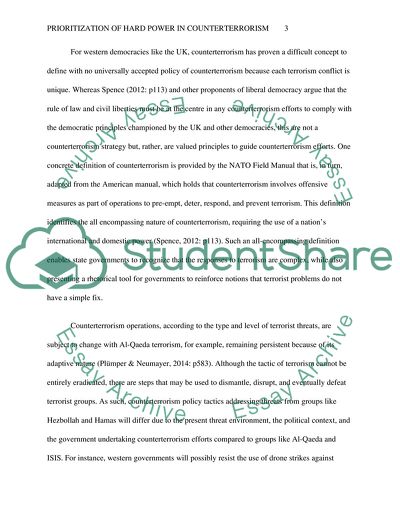Cite this document
(Prioritization of Hard Power in Counterterrorism Coursework Example | Topics and Well Written Essays - 3000 words, n.d.)
Prioritization of Hard Power in Counterterrorism Coursework Example | Topics and Well Written Essays - 3000 words. https://studentshare.org/social-science/1864998-should-hard-power-instruments-or-soft-power-instruments-be-prioritised-in-order-to-make-an-effective-response-to-terrorism
Prioritization of Hard Power in Counterterrorism Coursework Example | Topics and Well Written Essays - 3000 words. https://studentshare.org/social-science/1864998-should-hard-power-instruments-or-soft-power-instruments-be-prioritised-in-order-to-make-an-effective-response-to-terrorism
(Prioritization of Hard Power in Counterterrorism Coursework Example | Topics and Well Written Essays - 3000 Words)
Prioritization of Hard Power in Counterterrorism Coursework Example | Topics and Well Written Essays - 3000 Words. https://studentshare.org/social-science/1864998-should-hard-power-instruments-or-soft-power-instruments-be-prioritised-in-order-to-make-an-effective-response-to-terrorism.
Prioritization of Hard Power in Counterterrorism Coursework Example | Topics and Well Written Essays - 3000 Words. https://studentshare.org/social-science/1864998-should-hard-power-instruments-or-soft-power-instruments-be-prioritised-in-order-to-make-an-effective-response-to-terrorism.
“Prioritization of Hard Power in Counterterrorism Coursework Example | Topics and Well Written Essays - 3000 Words”. https://studentshare.org/social-science/1864998-should-hard-power-instruments-or-soft-power-instruments-be-prioritised-in-order-to-make-an-effective-response-to-terrorism.


